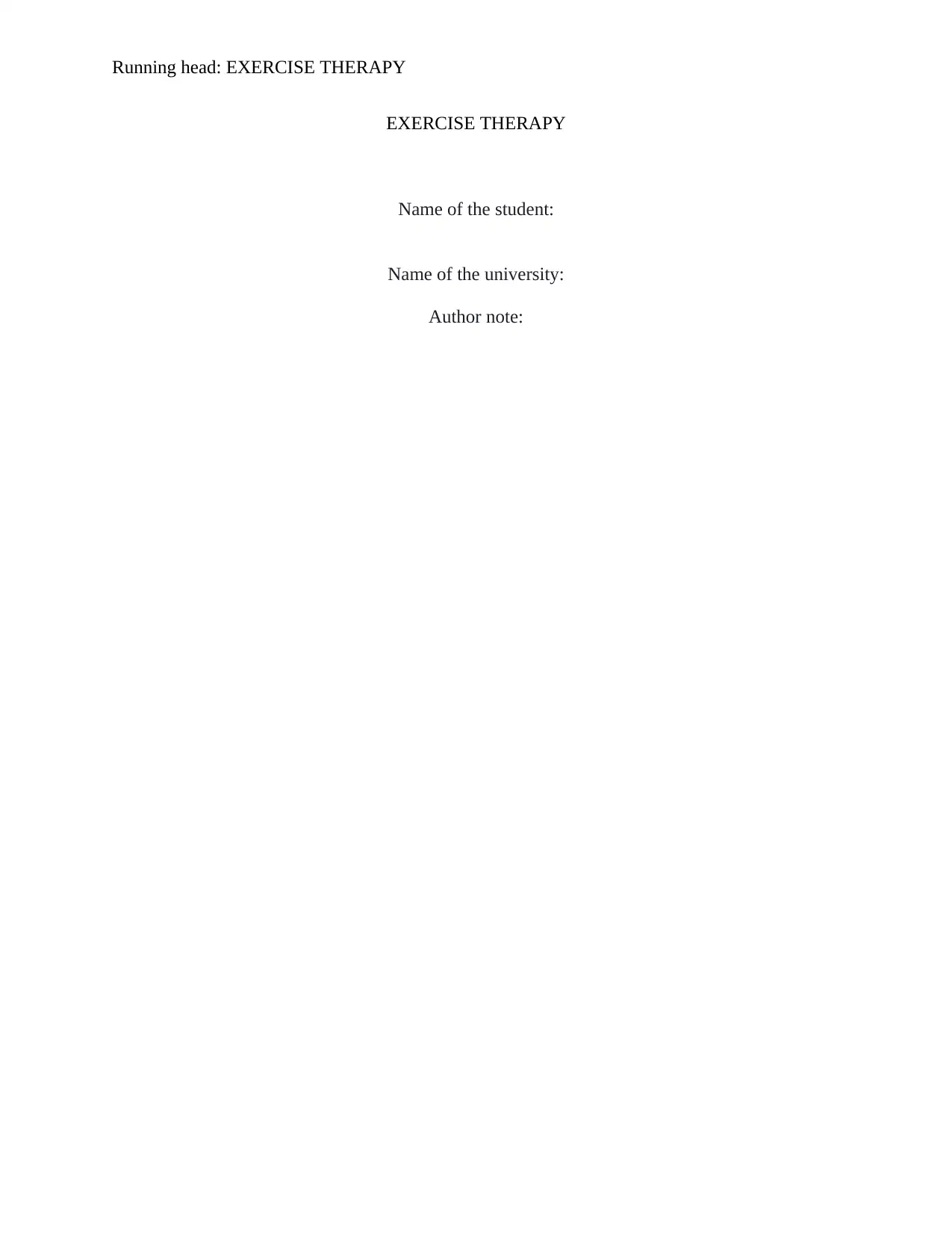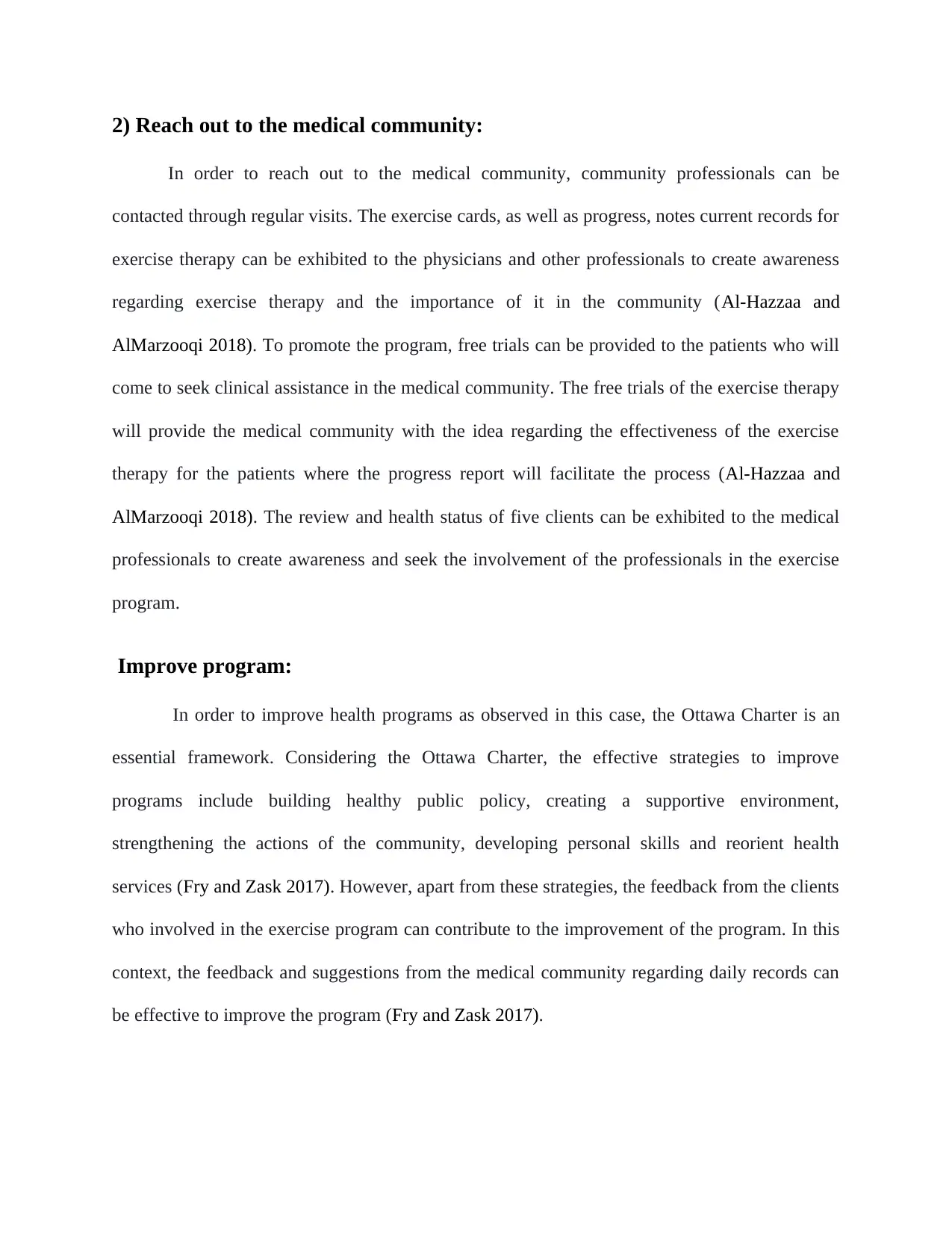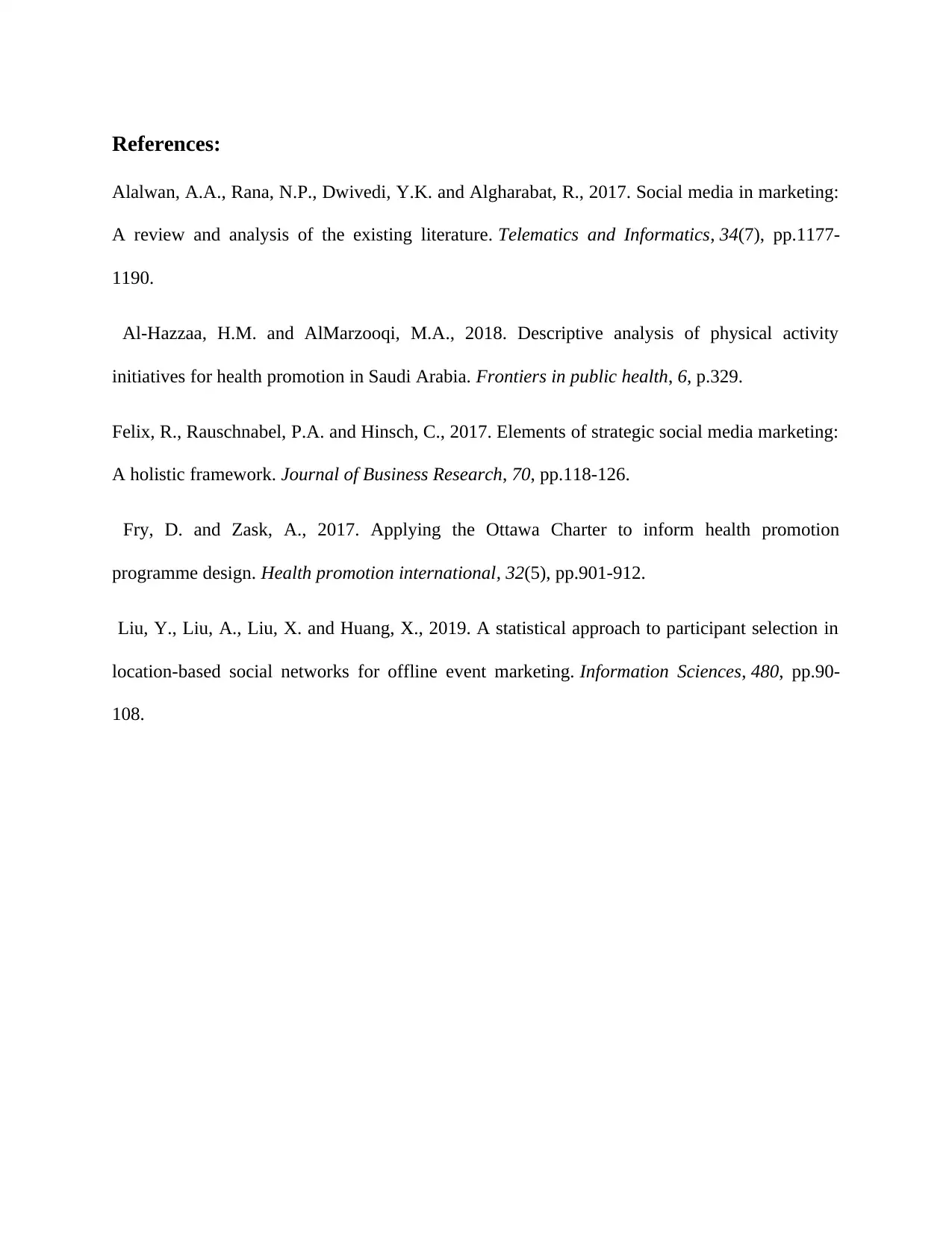Marketing Exercise Therapy Services: Strategies and Approaches
VerifiedAdded on 2022/08/24
|4
|772
|19
Report
AI Summary
This report, written from the perspective of an exercise therapist, examines effective strategies for marketing exercise therapy services. The report details the use of both online marketing, such as social media platforms like Facebook, Instagram, and Twitter, and offline marketing through pamphlets and posters. It also highlights the importance of client reviews and reaching out to the medical community through regular visits and free trials to promote the program. Furthermore, the report emphasizes the application of the Ottawa Charter framework for improving health programs, including building healthy public policy, creating a supportive environment, and strengthening community actions. Client feedback and suggestions from the medical community are also identified as crucial for program enhancement, ensuring the exercise therapy services are effectively marketed and continually improved.
1 out of 4











![[object Object]](/_next/static/media/star-bottom.7253800d.svg)